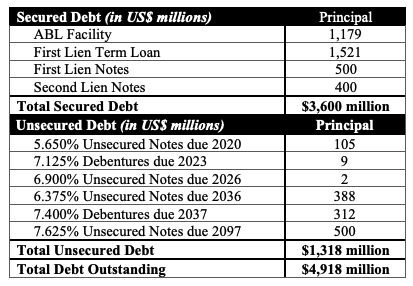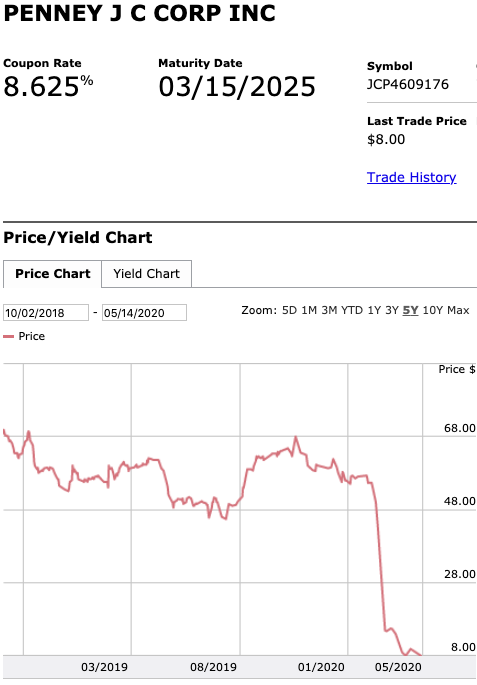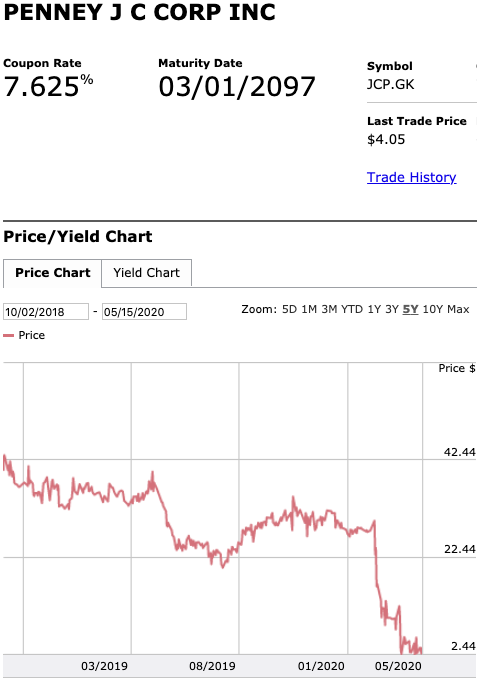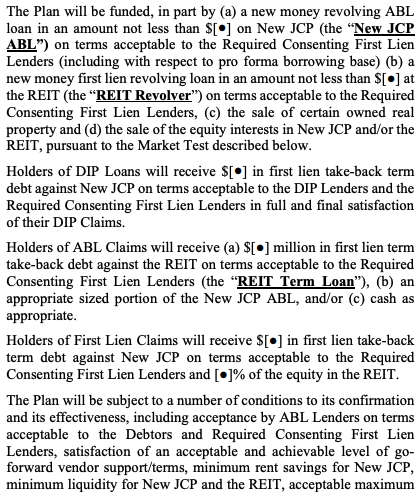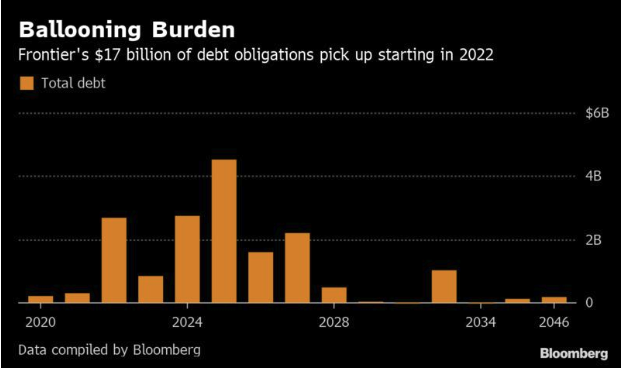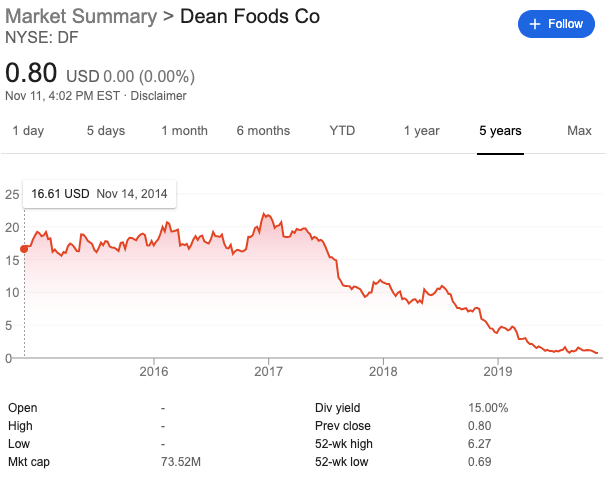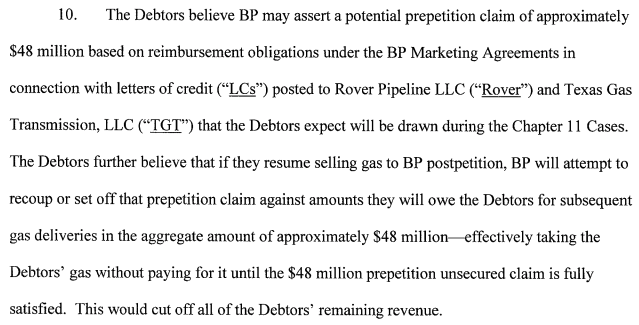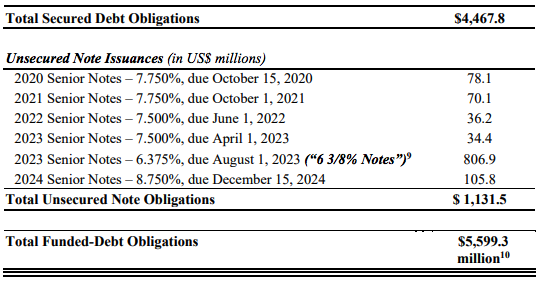⛽️New Chapter 11 Bankruptcy Filing - Unit Corporation ($UNT)⛽️
Unit Corporation
May 22, 2020
Oklahoma is where a lot of the action is at. Unit Corporation ($UNT) is a publicly-traded Tulsa-based holding company that, through three operating segments, offers (i) oil and gas exploration and production, (ii) contract drilling and (iii) midstream services. Like every other oil and gas company under the sun, this one has too much funded debt. $789mm to be exact, split between a $139mm RBL facility and $650mm in ‘21 subordinated unsecured notes. And like every other oil and gas company under the sun, it cannot sustain its capital structure. For months now, the debtors have been the bankruptcy equivalent of deadbeats — bouncing from one standstill agreement to the next so as not to get hit with a meaningful on-schedule redetermination liability that they wouldn’t be able to satisfy (PETITION Note: this is particularly relevant because they had already been hit by a “wildcard” or “off-schedule” redetermination in January, knocking their borrowing base down $75mm. Instant liability! Yay!!). On brand, the debtors likewise couldn’t afford their semi-annual May 15 interest payment.
Why the bankruptcy now? Well, you’ve seen this movie many times already in the last month or so. You’ve got a starring role for Vladimir Putin. And a starring role for MBS. And you’ve got a few plagues for added drama: first, plummeting commodity prices and then a global pandemic. These factors negatively impacted liquidity and sparked a number of strategic processes including (a) the sale of 50% ownership in Superior Pipeline Company to SP Investor Holdings LLC for $300mm in spring of 2018 and (b) an attempted up-tier exchange of the subordinated notes into newly issued 10% senior secured notes and 7% junior notes. The debtors, however, were unable to successfully obtain the requisite number of tenders. Not only would the exchange have extended the debtors’ maturity profile and eliminated short-and-medium term refi risk, it would have removed the danger that the debtors would trigger a springing maturity in their RBL. Oh well.
Luckily the debtors got themselves an agreement with 70% of the subordinated noteholders and the RBL lenders on the terms of a consensual financial restructuring transaction — like, as the shotclock was about to go off (read: when the standstill agreement expired on May 22, the filing date). The deal includes, among other things, (i) a $36mm new money DIP credit facility, (ii) a debt-for-equity swap by the noteholders for equity in each of reorganized Unit Corp and the upstream and contact drilling opcos, (iii) a new $180mm exit facility from the RBL lenders in exchange for a 5% exit fee paid in post-reorg equity in reorganized Unit Corp. (PETITION Note: apparently the RBL lenders have no interest in owning equity in contact drilling services), and (iv) payment in full in cash or reorganized equity to general unsecured claimants depending upon which entity they have a claim against. Notably, equityholders who do not opt out of releases will receive out-of-the-money warrants exercisable for an aggregate of 12.5% of the interests in the reorganized Unit Corp entity.
We’d be remiss if we didn’t highlight one other aspect of these cases. As is all the rage these days, management got away with an amended incentive structure on the eve of bankruptcy that enriched them all to the tune of $900k. Sweeeeeet. Meanwhile, they spent a good chunk of November ‘19 through April ‘20 sh*tcanning their employees and promising them 4 weeks of severance for every year of service up to 104 weeks. While this is admittedly a pretty rich severance plan, it appears that the restructuring support agreement memorializing the above-referenced transaction proposes to renege on this policy and instead provide merely four to 13 weeks severance to employees. You’ve gotta love these oil and gas execs: they’re wildly proficient at destroying value but still manage to always siphon some off for themselves. It’s awesome.
Jurisdiction: S.D. of Texas (Judge Jones)
Capital Structure: $139mm RBL facility (BOKF NA), $650mm in ‘21 subordinated unsecured notes (Wilmington Trust NA)
Professionals:
Legal: Vinson & Elkins LLP (Harry Perrin, Paul Heath, Matthew Pyeatt, David Meyer, Lauren Kanzer, Zachary Paiva, Emily Tomlinson)
Financial Advisor: Opportune LLP (Gary Pittman)
Investment Banker: Evercore Group LLC (Bo Yi)
Claims Agent: Prime Clerk LLC (*click on the link above for free docket access)
Other Parties in Interest:
RBL Agent: BOKF NA
Legal: Frederic Dorwart Lawyers PLLC (Samuel Ory) & Bracewell LLP (William A. Trey Wood III)
Financial Advisor: Huron Consulting Group Inc.
Ad Hoc Group
Legal: Weil Gotshal & Manges LLP (Matthew Barr, Lauren Tauro)
Financial Advisor: Greenhill & Co. Inc.



